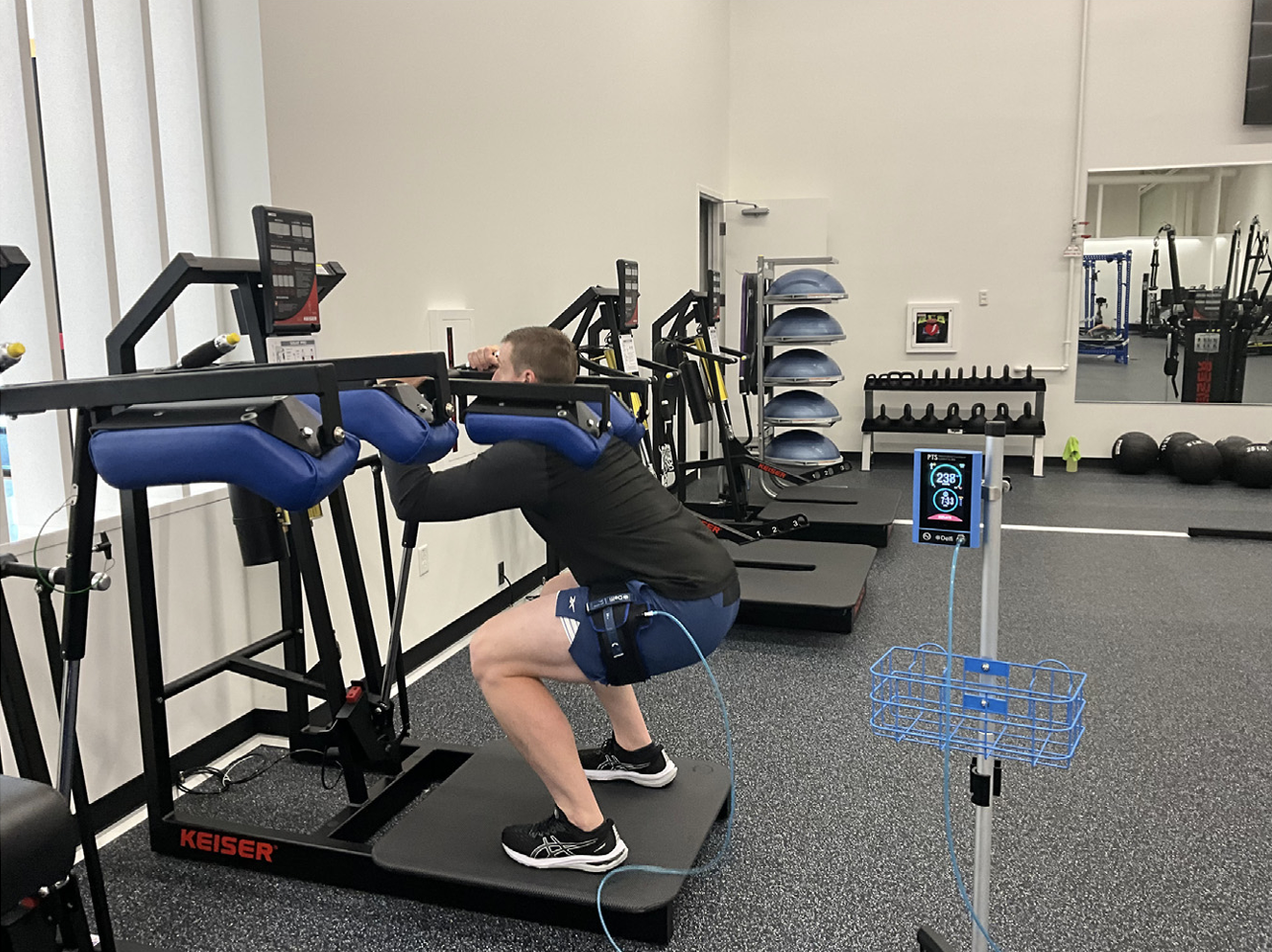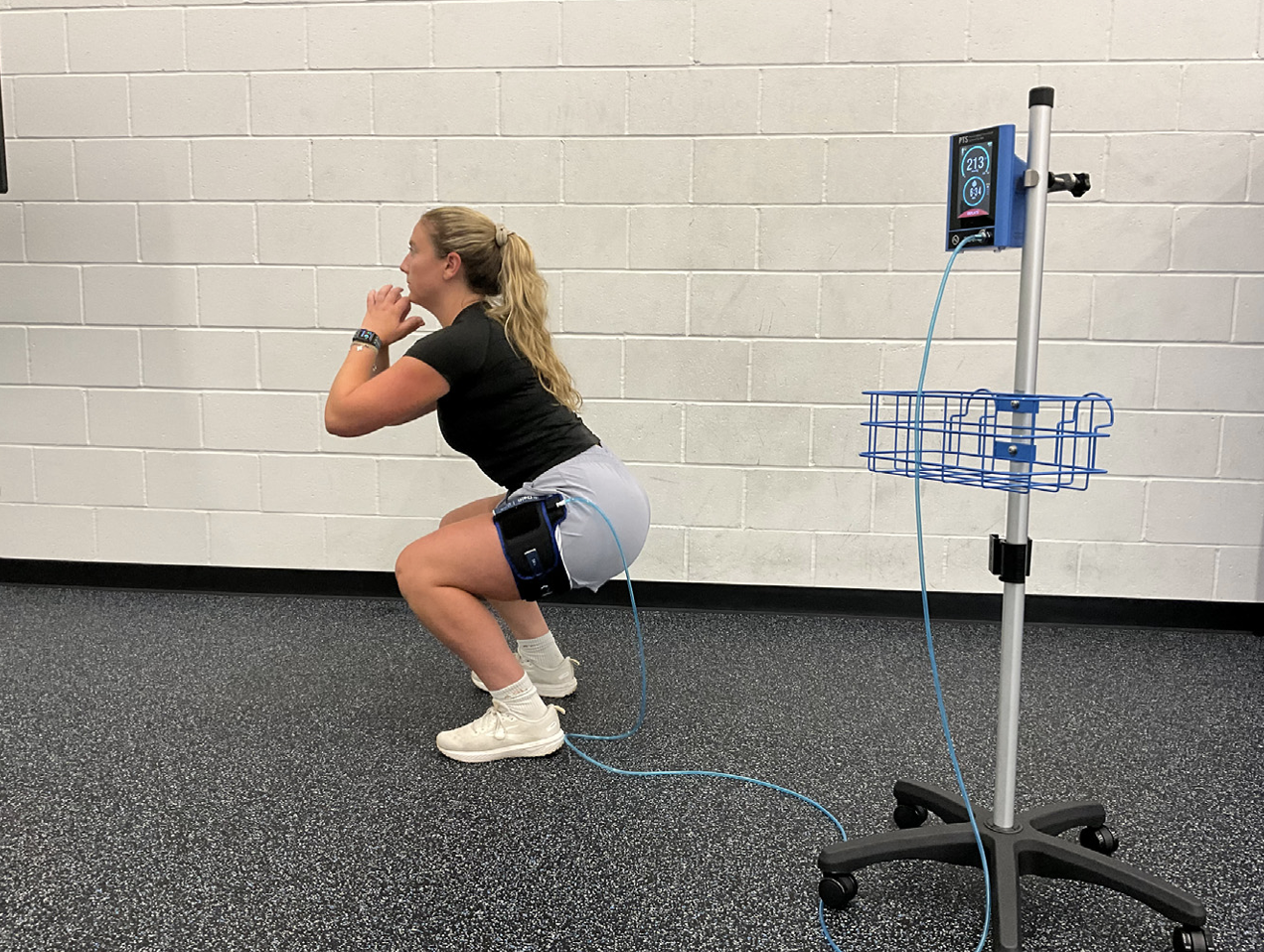When athletes can’t lift heavy, but still need to maintain or build muscle, BFR may be the tool you need.
This method allows you to drive muscle growth, strength, and recovery without the mechanical load typically required for those adaptations.
In this guide, we’ll break down how it works, when to use it, safety considerations, and practical programming examples you can use right away.
Why BFRT Matters for Coaches and Clinicians
Whether you're working with athletes in-season, post-op, or simply managing joint stress, BFRT gives you options:
- Reduces joint and tissue load
- Still delivers hypertrophy and strength gains
- Fits seamlessly into early rehab, deload phases, or warmups

How BFRT Works
BFRT uses a cuff to restrict venous return (and partially restrict arterial inflow) in the limb you're training.
This creates a local hypoxic environment and increases metabolite accumulation, which leads to:
- Greater motor unit recruitment (especially Type II fibers)
- Increased cellular swelling → anabolic signaling
- Activation of systemic growth pathways (IGF-1, GH, mTOR)
You get muscle growth and strength, even when training at just 20–40% of 1RM.
Mechanisms of Muscle Growth that BFRT Targets
Muscle hypertrophy happens through a few key mechanisms.
BFRT hits them all:
- Metabolic stress: Build-up of lactate, H+, and other metabolites
- Mechanical tension: Training to fatigue under occlusion recruits high-threshold fibers
- Muscle damage: Even light-load work under occlusion can induce microtrauma and adaptation
When to Use BFRT
Here’s when to implement BFRT with confidence:
Rehabilitation
- Early-phase post-op (ACL, Achilles, rotator cuff, TKA)
- Mitigates atrophy and preserves bone mass
- Less joint stress compared to traditional loading
Performance
- Supplemental hypertrophy for healthy athletes
- Load-sensitive joints or tendons
- Warm-up or finisher to drive volume at low loads
Recovery
- Ischemic preconditioning (IPC) before or after training
- Helps reduce soreness and improve next-day performance
- Enhances aerobic conditioning at low intensity (e.g., walking, cycling)

How to Use BFRT
Here’s how to implement BFRT with confidence:
Low-Load BFRT (Most Common)
- Load: 20–40% of 1RM
- Reps: 30-15-15-15
- Rest: 30–60 seconds between sets
- Frequency: 2–3x/week
Passive BFRT (Cell Swelling Protocol)
- Occlusion: 70–100% limb occlusion pressure (LOP)
- Time: 5 min occlusion + 3 min reperfusion
- Sets: 3–4 per session, total time ≤20 min
BFRT + Aerobic Exercise
- Mode: Walking or cycling
- Intensity: <50% VO₂max
- Duration: 5–10 minutes under occlusion
Placement and Pressure
- Cuff placement should be as proximal as possible
- Use wider cuffs to reduce discomfort and lower pressure needs
- Occlusion pressure:
- LE: 40–80% arterial occlusion
- UE: Up to 60%
Is It Safe?
When used appropriately, BFRT is safe and effective.
Screen carefully before applying BFRT.
Contraindications
- History of DVT or embolism
- Vascular disease or clotting disorders
- Renal dysfunction or uncontrolled hypertension
- Active infection, cancer, or open wounds
Side Effects and Risks
- Minor side effects include discomfort, bruising, soreness.
- Major risks are rare but include rhabdomyolysis, nerve injury, thrombus formation
- Studies suggest incidence of DVT with BFRT is <0.06%, and rhabdomyolysis is 0.008%; extremely rare with proper use.
Why You Should Be Using BFRT
As outlined in this guide, BFRT can be used when:
- Your athlete can’t tolerate heavy loads
- You need to preserve or build muscle during rehab
- You want a joint-friendly way to increase training volume
- You’re looking to enhance aerobic capacity without high intensities
- You need a recovery strategy that works
If you're not already using BFRT, now’s the time to explore it. Just remember to apply it strategically, safely, and with purpose.
References and Support
Murphy, M. (2024). Blood Flow Restriction Training: A Tool to Enhance Rehabilitation and Build Athlete Resiliency. Arthroscopy, Sports Medicine, and Rehabilitation.
Mirzayev J, Levitt DE. (2025). Comparison of Muscle Adaptation to Blood Flow-Restricted Versus Traditional Resistance Training in Healthy Adults: A Brief Systematic Review and Meta-analysis. Strength and Conditioning Journal.
Loenneke, J. P., Hammert, W. B., Kataoka, R., Yamada, Y., & Abe, T. (2025). Twenty-five years of blood flow restriction training: What we know, what we don’t, and where to next? Journal of Sports Sciences.

